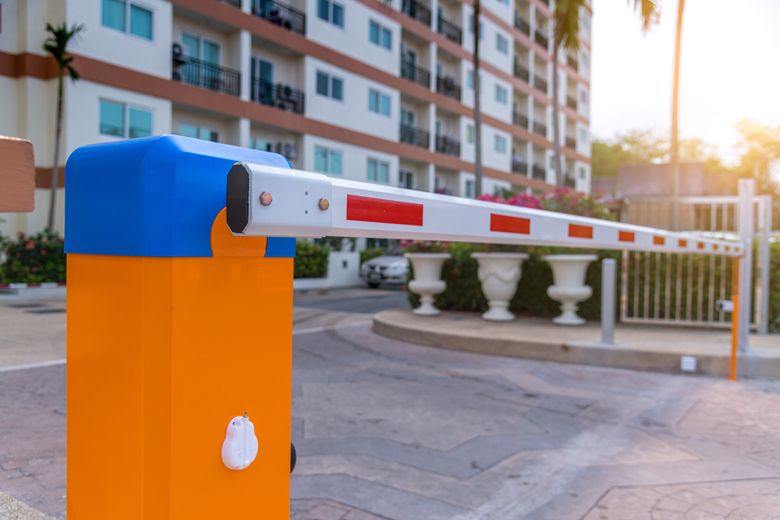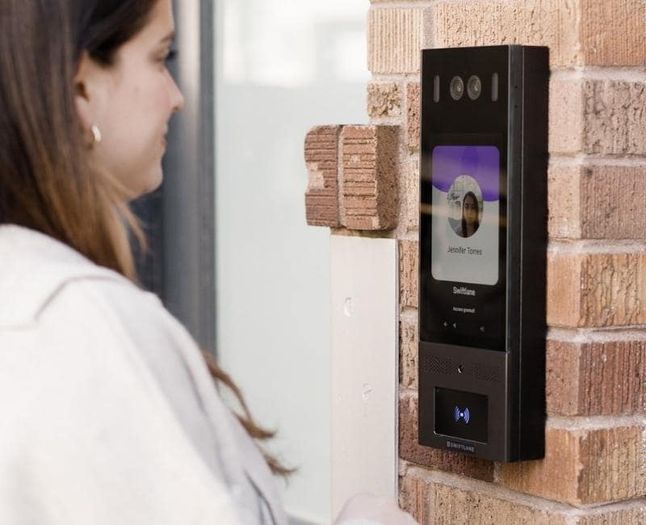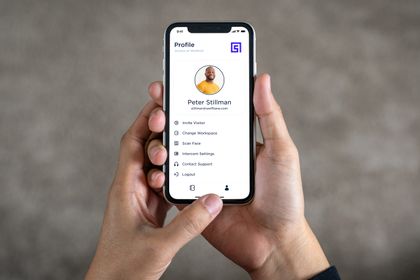Table of contents
- What are Gated Access Control Systems?
- Top Tips for Purchasing and Installing a Gate Entry System
- Types of Access Control for Gates
- Methods of Vehicle Access Control
- Types of Gate Entry Systems for Visitor Access
- Types of Access Methods for Permanent Residents
- Connectivity Requirements for Gate Access Control
- Cell Phone-Based Gated Community Access Control
- Wireless Video Gate Intercom
- Wireless RFID Gate Access Control Systems
Related posts
- How to Buy a Wireless Intercom System
- Complete Guide to Key Card Entry Systems
- The Evolution and Types of Apartment Entry Systems
- Apartment Intercom System with Door Release
What are Gated Access Control Systems?
Gated access control refers to a security system used to manage entry to a property, such as a gated community, home, or business. These systems use various technologies, such as gate intercom system, vehicle tag readers, card readers, and garage clickers, to determine who is allowed to enter the property. The goal is to increase security, convenience, and accountability while controlling who is granted access to the property. There are two types of gated access control: vehicle access control and pedestrian access control, which manage the entry of vehicles and pedestrians, respectively.
Top Tips for Purchasing and Installing a Gate Entry System
Installing a gate entry system is a significant investment for any property, be it residential or commercial. It is essential to choose the right system that meets your specific needs, budget, and requirements. In this guide, we’ll go over some of the top tips to keep in mind when purchasing and installing gate entry systems.
Both Visitor and Resident Access Control
Choose a single system that handles both visitor and resident access, rather than two different systems. It should include options like intercom for visitors, as well as entry options for residents like RFID gate access, clickers, or alternatives. Having a unified system makes it easier to manage, reduces costs, and provides a more streamlined experience for everyone involved.
Video Intercom vs Telephone
Telephone line systems are becoming increasingly expensive and are being phased out in many areas. A video intercom provides more convenient options and a lower cost in the long term. It also provides added security, as you can see who is at the gate before granting access.
Cloud-Based Access Management
Make sure the gate system you choose integrates with the rest of your building’s access control system, such as fob readers and door access, to reduce maintenance costs and overhead. Cloud-based access management systems like Swiftlane offer a unified system that can manage access to your entire property, including the gate, fob readers, mobile app-based access, and individual unit access.
Wireless vs Wired Systems
Check with the manufacturer if they can provide cellular connectivity instead of running a conduit to each gate. This can be a more cost-effective solution and eliminates the need for extensive wiring.
Mobile App
See if the system you choose can provide mobile app-based access as a modern amenity. This allows for easy access for residents and visitors alike and can be used in conjunction with actual clickers and vehicle tags.
Vehicle Tags over Garage Clickers
Vehicle tags are a more cost-effective and convenient solution than garage clickers. They are passive, meaning they don’t require battery changes, and are automatically detected, so there’s no need to press anything.
Integration with the Rest of the Building Access Control
In the past, gate, fob, and door access systems have been disconnected. Today, manufacturers like Swiftlane offer a unified system that can manage access to your entire property, reducing costs and providing a better experience.
Weather and Vandal Protection
Make sure the system you choose has at least an IP65 rating for weather protection and a high IK rating (between 1-10, with 10 being the highest impact protection) for vandal protection. This ensures that your system will continue to function properly even in harsh weather conditions and is protected against vandalism.
Remote Maintenance
Cloud-based systems like Swiftlane can be managed and serviced remotely, speeding up service calls and reducing maintenance costs. This provides added convenience and peace of mind, knowing that your system is being taken care of by professionals.
In conclusion, these are just some of the top tips to keep in mind when purchasing and installing a gate entry system. It’s important to choose a system that meets your specific needs, budget, and requirements. Doing your research and working with a trusted provider can help ensure that you make the right choice for your property.
Types of Access Control for Gates
Types of Access Control for Gates
Vehicle Gated Access Control System
A vehicle gated access control system is a type of security measure used to control and monitor the entry and exit of vehicles into a particular area or property. It is commonly used in residential communities, gated communities, commercial properties, and other secure areas where it is necessary to control the flow of vehicles. The system typically includes a gate that can be opened and closed electronically, a control panel for authorized personnel, and a method for verifying the identity of the driver and vehicle.
Pedestrian Gated Access Control System
A pedestrian gated access control system is a type of security measure used to control and monitor the entry and exit of pedestrians into a particular area or property. This type of gated access control system is commonly used in commercial properties, residential communities, gated communities, and other secure areas where it is necessary to control the flow of pedestrians. The system typically includes a gate that can be opened and closed electronically, a control panel for authorized personnel, and a method for verifying the identity of the pedestrian, such as a keycard or biometric reader.
Methods of Vehicle Access Control
Garage Clickers: Garage clickers are a simple and convenient way to grant access to vehicles. The driver simply presses a button on the clicker, which triggers a signal to the gate operator, opening the gate for the vehicle to enter.
Vehicle Tags: Vehicle tags are similar to garage clickers but use a tag instead of a button. The tag is placed on the vehicle and communicates with the reader at the entrance, granting access when the vehicle is within range.
Intercom Systems: Intercom systems enable secure communication between the vehicle and the property owner or security personnel, who can grant or deny entry to the property.
Keypad Systems: Keypad systems require the driver to enter a code into a keypad located near the entrance to the property. Access is granted or denied based on the correct code being entered.
Radio Frequency Identification (RFID) Systems: RFID systems use radio waves to identify and grant access to authorized vehicles. The vehicle is equipped with an RFID tag, which is read by a reader at the entrance, and access is granted or denied based on the information stored in the tag.
Automatic Number Plate Recognition (ANPR): ANPR systems use cameras and software to automatically read and recognize the license plate of a vehicle, and grant or deny access based on pre-defined rules and data.
Biometric Systems: Biometric systems use biometric data such as fingerprints, facial recognition, or iris scans to grant or deny access to authorized vehicles.
Smart Cards: Smart cards are similar to RFID systems but use a card instead of an RFID tag to grant access to the property. The card is presented to a reader at the entrance, and access is granted or denied based on the information stored on the card.
Each of these methods has its own benefits and drawbacks, and the best option for a particular property will depend on various factors, such as the size and complexity of the property, the level of security required, and the budget available for the system.
Types of Gate Entry Systems for Visitor Access
Intercom Systems: A visitor speaks to a resident or property manager through an intercom system to gain access.
Keypad Systems: A visitor inputs a code provided by a resident or property manager to gain access.
Temporary Access Cards: A visitor is given a temporary access card by a resident or property manager to gain access.
Radio-frequency Identification (RFID) Systems: A visitor uses a RFID card or fob provided by a resident or property manager to gain access.
Types of Access Methods for Permanent Residents
Keypad Gate Entry System: Permanent residents can enter a gated community by using a personal code on a keypad near the gate. This type of access is easy to use and convenient.
Vehicle Tags: Vehicle tags, also known as transponder tags, allow permanent residents to enter the gated community by simply driving near the gate. The tag is detected by a reader at the gate and the gate opens automatically.
Clickers: Similar to vehicle tags, clickers allow permanent residents to open the gate by pressing a button on the remote control. Clickers are a convenient and cost-effective solution for gated access control.
Voice Commands through Siri or Mobile App: Some gated communities use voice commands or mobile apps to control access. Residents can open the gate by using voice commands through Siri or by using a mobile app on their smartphone.
Face Recognition Entry: Face recognition entry uses a reader on a pedestal next to the car to identify the resident and open the gate automatically. This type of access is becoming increasingly popular due to its convenience and ease of use.
Connectivity Requirements for Gate Access Control
Wiring: Wiring is required to connect the gate access control system to the gate operator arm and other components. The wiring should be installed according to the manufacturer’s specifications and local codes and regulations.
Power: Power is required to operate the gate access control system and its components. This can be provided through a standard electrical outlet or a dedicated circuit.
Internet Connectivity: Internet connectivity is required for cloud-based access control systems and to enable remote access and management. A reliable and secure internet connection is crucial for the proper functioning of these systems.
Telephone Line Connectivity: Telephone line connectivity may be required for certain types of gate access control systems, such as intercom systems.
Connecting to Existing Gate Operator Arm: The gate access control system should be connected to the existing gate operator arm to control the opening and closing of the gate. This connection should be made according to the manufacturer’s specifications and local codes and regulations.
It’s important to consider the above connectivity requirements when installing a new gate access control system to ensure proper functioning and reliable operation.
Cell Phone-Based Gated Community Access Control
Gone are the days when you had to carry a physical clicker or fob to gain access to your gated community or building. With the advancement of technology, cell phone based gate access has become the new norm. This method of access not only provides enhanced security, but it also offers unmatched convenience.
One of the major benefits of cell phone based gate access is the ability to grant or deny access from anywhere. Property managers or homeowners can grant temporary access to guests or contractors, without having to be physically present. This eliminates the need for manual intervention and saves time.
Another advantage of cell phone based gate access is that it eliminates the need for physical fobs or clickers, which can get lost or damaged. With a cell phone based system, access can be revoked or reissued with a simple tap on a smartphone. This makes the system more secure and convenient
Additionally, cell phone based gate access integrates seamlessly with other building access control systems, such as fob readers and door access. This integration creates a unified system that can be managed from one central location, reducing maintenance costs and creating a better overall experience.
Finally, many cloud based systems, such as Swiftlane, can be managed remotely and serviced remotely, speeding up service calls and reducing maintenance costs.
Wireless Video Gate Intercom
Wireless video entry systems are becoming increasingly popular for gated communities, residential properties, and commercial properties. They offer a convenient and cost-effective solution for gate access control that eliminates the need for traditional telephone intercom systems. A wireless video entry system works by connecting the gate intercom to a wireless network, allowing residents or visitors to communicate with someone at the gate from a mobile device or other device connected to the network. Here are some of the key benefits of wireless video entry systems for gates:
Convenience: Wireless video entry systems eliminate the need for residents or visitors to be physically present at the gate to gain entry. They can communicate with someone at the gate from anywhere within the network’s range, using a mobile device or other connected device.
Cost savings: Wireless video entry systems eliminate the need for traditional telephone lines and wiring, reducing installation costs and ongoing maintenance expenses.
Enhanced security: Wireless video entry systems allow residents or visitors to verify the identity of someone at the gate before granting access. This enhances security by preventing unauthorized individuals from gaining entry.
Improved functionality: Wireless video entry systems can be integrated with other building access control systems, such as key fob readers and mobile app-based access, to provide a unified solution for managing access to the property.
Remote management: Wireless video entry systems can be managed and serviced remotely, reducing the time and expense of maintenance calls and improving response times in the event of an issue.
Wireless video entry systems offer a modern, convenient, and cost-effective solution for gate access control. Whether you’re looking to upgrade an existing gate entry system or install a new one, it’s worth considering a wireless video entry system as a solution.
Wireless RFID Gate Access Control Systems
Radio-Frequency Identification (RFID) technology has become increasingly popular for access control in gated communities and private properties. One of the key benefits of RFID gate access control systems is their seamless integration with existing systems, providing residents and guests with a convenient and secure entry experience.
When it comes to RFID gate access control, there are two main options: short-range RFID readers, such as key fobs, and long-range wireless RFID solutions, like garage clickers or vehicle tags. While both options provide secure access control, long-range wireless RFID solutions like garage clickers or vehicle tags offer several advantages over short-range RFID readers like key fobs.
One of the biggest benefits of long-range wireless RFID solutions is that they do not require the car to stop or the resident to reach the reader. This means that there is less friction and a more seamless entry experience. With a long-range wireless RFID solution, the car can keep driving, and the gate will automatically open without any need for the resident to interact with the reader.
In addition, long-range wireless RFID solutions like vehicle tags are passive, meaning they do not require a battery to be changed, making them more cost-effective and convenient in the long run. They are also automatically detected, eliminating the need for residents to press any buttons or interact with the system in any way.
In conclusion, when it comes to RFID gate access control systems, it is typically recommended to use a long-range wireless RFID solution, like garage clickers or vehicle tags, rather than short-range RFID readers like key fobs. Not only does this provide a more seamless entry experience, but it is also more cost-effective and convenient in the long run.
Summary
Installing a new gate entry system can be a complex process, but it is important to choose the right one to meet the needs of your building. The top tips for purchasing and installing a gate entry system include choosing a single system that handles both visitor and resident access, opting for video intercom over telephone lines, ensuring the gate system works with the rest of the building access control, checking for wireless or cellular connectivity options, considering mobile app access, using vehicle tags instead of garage clickers, integrating with the rest of the building access control, making sure the system is weather and vandal proof, and ensuring the system is manageable remotely. By following these tips, you can reduce costs and improve the overall experience for your residents.
If you want a consultation and quote for upgrading your building gate access system, we recommend requesting a quote from Swiftlane. With their unified system, they can manage access to the whole property, including gate access, fob readers, mobile app based access, and individual unit access, reducing costs and improving the overall experience.
Get a Quote from Swiftlane for A Gated Entry System
Reach out to Swiftlane for a free consultation or quote for upgrading your gated entry system







